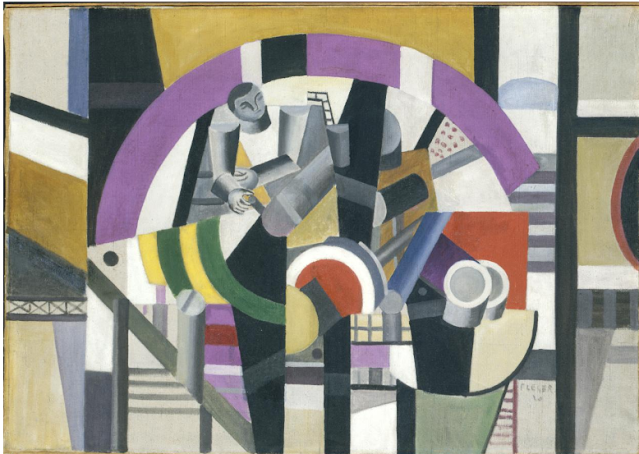Charles Weir, "The Wood Sawyer"
I found this image while scanning through the internet. The artist is new to me, but I was captivated by the subject and composition.
The artist is Charles Weir, (1823 -1845), and it was painted in 1842, three years before his death. There are several interesting things about this artist. First, he was the younger brother of Robert Weir, a well known painter and educator who spent the majority of his adult life teaching art at West Point. As his dates indicate, he did this painting when he was only 19, and dying at 22. I could find no information about why he passed away so young. Seeing a photo of Robert Weir, it appears Robert was a Caucasian man, so it make sense that Charles was, too. The last interesting fact is that this painting is one of only two known works - what a pity.
Although almost no information is available about Weir's short life, there is a fair amount about this scene because it is a specific location in New York City. In the museum's description of the painting we learn this man is cutting wood to be sent down an open scuttle, into the cellar of a hotel. This description mentions a hanging sign with the hotel name, but I am unable to see it. Because of the elegant dress, this man maybe a porter, or other employee, taking on this job. The church in the rear is St. Mark's church in the Bowery area of the city. And, looking closer, into the lower rear are what are called, "rooting" hogs, which evidently ran free on the streets of New York during mid nineteen century New York.
I am drawn to this painting because it tells me so much. I look at lots of individual portraits and many are exceptionally boring. But here we have a man at work, and all the above information tells us all sorts of details we would never have known if left out. The figure is center stage. He is leaning at an angle which continues through the device supporting his work. To our left is a sharp shadow running almost parallel to him, with the strong lines of the building cementing the right side. It is a semi cloudy day, but there seems to be some sunlight casting that shadow and lighting his white shirt and arms.
When I see works similar to this one, I think of the French Impressionists who rallied against painters working entirely in studio. I have heard the term, "brown sauce" in reference to what they turned out. Certainly Mr. Weir came before them, but I like to imagine what this obviously talented painter could have achieved if he had seen a few Monets, or Manets. Never-the-less, Weir has given us an amazing image and from it we get a little hint to his life and times.
"The Wood Sawyer" is part of the Metropolitan Museum of Art, New York City. It is an oil on board measuring 22 inches by 18 inches.
Make Art a part of your life, it's a beautiful thing to do.




My first thought is - stunning!! It's hard to imagine this proficiency at 19, or his future possibilities!! There is so much information in the painting but it doesn't detract from the subject. His shoulders and sleeves appear to be spot lighted.. I do see the hanging hotel sign to the right of his hat. Does the fact that he is black, help take us to the time and location of the scene? The tile sidewalk seems too nice for this messy task. Is that a hole in the street with a cover laying near by and attached to the hole? The somber sky adds to the demeanor of the job. His color palate validates this work of art. He even shows the "sawdust"!! The composition is amazing! (It takes me to the childhood memory of my father chopping wood to put down a chute to the cellar.!!)
ReplyDeleteYes, Char, I totally missed the hotel sign near his hat. I kept looking inside or on the doorway. Good work! I, too, think the fact that this man is black, and painted by a white man, can have some additional meaning, but lets leave that for the viewer to decide.
Delete